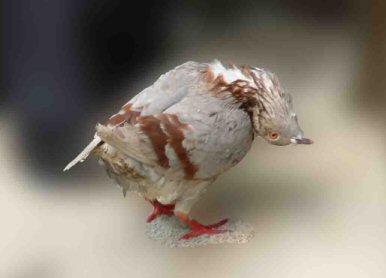signs of bird flu in poultry
Bird flu, also known as avian influenza, isn’t just a health issue for birds—it’s a crisis for poultry farmers and the entire industry. Recognizing the Signs of Avian flu early is crucial, as the disease can spread rapidly, wiping out entire flocks within days and leaving farmers devastated. Symptoms such as sudden death, respiratory distress, and a drop in egg production often serve as the first warning signs. For example, in past outbreaks, poultry farms around the world have faced enormous losses due to millions of birds being culled to stop the spread.
Early Indications of Bird Influenza in Poultry
Bird influenza, or avian flu, can free destruction on poultry rushes. Early identification is vital in forestalling the spread of this exceptionally infectious sickness. Here are a few vital signs to keep an eye out for:
1-Respiratory Pain
Trouble Relaxing: Chickens might show worked breathing, wheezing for air, or open-mouth relaxing.
Hacking and Sniffling: Tune in for surprising sounds coming from your group.
Nasal Release: Search for any release from the nostrils.
2-Decreased Appetite and Lethargy
Reduced Feed Intake: Chickens might eat less or quit eating through and through.
Lethargy: Birds might seem drowsy, idle, or feeble.
Drooped Wings: This can be an indication of disease or uneasiness.
3-Stomach related Issues
Diarrhea: Loose or watery stools can indicate a health problem.
Reduced Water Intake: Decreased water consumption can lead to dehydration.
4-Neurological Symptoms
Quakes: Uncontrolled shaking or shudder.
Loss of motion: Trouble moving or planning developments.
Torticollis: Winding or curving of the neck.
5-Different Signs
Decreased Egg Creation: A critical drop in egg creation or unfortunate egg quality can be an indication of disease.
Big Head and Neck: Enlarging and staining of the head and neck can be a side effect of some avian flu strains.


Advanced Stages and Complications of Bird Flu
On the off chance that bird influenza advances uncontrolled, the side effects become more serious, and the sickness negatively affects your group. High level stages frequently mean broad sickness and higher death rates, making it imperative to comprehend what’s in store and act rapidly.
Serious Actual Side effects
At this stage, birds might encounter outrageous trouble relaxing. You could see open-mouth breathing, neck extending, and weighty gasping. These signs are a sob for help as the disease seriously influences their respiratory frameworks.
One of the most incredibly stressing complexities is interior dying. This frequently appears as little red spots on the legs or inside the mouth. Expanding in the joints, legs, or even the neck may likewise happen.

Conduct Changes in Cutting edge Stages
Birds experiencing progressed bird influenza will quite often be totally idle. They might quit eating and drinking through and through, which rapidly deteriorates their condition. A few birds could fall or give indications of neurological issues, like ungraceful developments or bending of the neck.
For instance, you might see a chicken lying level on the ground, incapable to get up or hold its head consistent. These side effects demonstrate the infection is influencing the bird’s sensory system, and sadly, recuperation is improbable as of now.
Differentiating Bird Flu from Other Poultry Diseases
With regards to poultry wellbeing, it’s urgent to precisely analyze diseases to execute the right treatment methodologies. While bird influenza is a huge concern, different sicknesses can emulate its side effects. We should dive into the critical contrasts to assist you with recognizing the guilty party and make a fitting move.
Common Poultry Diseases and Their Differences
Newcastle Sickness:
Side effects: Respiratory misery, apprehensive signs (turning neck, loss of motion), and unexpected passing.
Key Contrast: Dissimilar to bird influenza, Newcastle sickness frequently causes more extreme neurological side effects, like quakes and loss of motion.
Irresistible Bronchitis:
Side effects: Respiratory trouble, hacking, sniffling, and diminished egg creation.
Key Contrast: While the two sicknesses can cause respiratory issues, irresistible bronchitis regularly doesn’t prompt the extreme fundamental side effects found in bird influenza.

Coccidiosis:
Side effects: Loose bowels, weight reduction, and decreased craving.
Key Contrast: Coccidiosis basically influences the stomach related framework, while bird influenza can affect different organ frameworks.
Fowl Cholera:
Side effects: Unexpected demise, respiratory pain, and interior hemorrhages.
Key Contrast: Fowl cholera can cause quick passing, yet it frequently.
What to Do if You Spot Signs of Bird flu
Finding side effects of bird influenza in your herd can feel overpowering, yet fast activity is your best device to safeguard your birds and others close by. The means you take quickly can have a major effect in controlling the spread of the sickness.
Isolate the Affected Birds
If you notice Avian flu signs like coughing, lethargy, or sudden drops in egg production, the first step is to separate the sick birds from the rest of the flock.
- Place the symptomatic birds in a separate, well-ventilated area.
- Keep healthy birds as far away as possible from the isolated ones.
Example:
If your chicken coop is divided into sections, use one section as a “quarantine area” and keep the sick birds there.
Clean and Disinfect the Area
Disinfection is essential to stop the virus from spreading. Avian flu viruses can linger on surfaces, tools, and even shoes.
- Clean feeders, water containers, and any shared equipment with a strong disinfectant recommended for poultry use.
- Change into clean footwear and clothing before handling healthy birds.
Tip:
Keep a bucket of disinfectant near the coop so you can clean your boots before entering and leaving.
Follow Strict Biosecurity Measures
Biosecurity simply means protecting your flock from diseases like bird flu by keeping their environment safe and monitoring them for symptoms of bird flu.
- Limit visitors to your farm or coop.
- Avoid contact with wild birds or areas where they gather, as they can carry the virus.
- Wash your hands thoroughly before and after handling poultry.
Example:
If you feed your chickens in the morning, wear gloves and keep them stored near the coop so you don’t accidentally transfer germs from outside.
Report Signs of avian flu to Authorities
In most regions, bird flu is a notifiable disease. This means you must inform veterinary or agricultural authorities if you suspect an outbreak.
- Call your local veterinary service or animal health department immediately.
- Be ready to describe the symptoms, how many birds are affected, and any recent changes in your flock.
Why This Matters:
Authorities can test your flock for confirmation and guide you on the next steps, which might include containment or even culling to stop the spread.
Work with a Veterinarian
Your vet may recommend enhanced vaccination programs for other diseases to keep your birds healthy while dealing with bird flu containment. They can also provide guidance on recognizing them Signs of Avian flu and taking appropriate steps to protect your flock.
